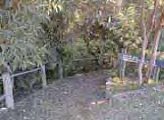Ray Park Bushcare Group work in Ray Park Carlingford.
Natural and Cultural Heritage
- Soil derived from Hawkesbury Sandstone and Wianamatta Shale
- Vegetation Community E. pilularis –E.saligna – E. paniculata and Syncarpia glomulifera - E. paniculata – Angophora floribunda Sydney Turpentine-Ironbark Forest and small area of Vegetation Community E. saligna Blue Gum High Forest
- Stands of eucalypts are heritage listed and are regarded as being of local heritage significance
- Park contains mature Blackbutts and Bluegums to 26m
- George Ray and two sons bought Bootle Farm from George Thorn in 1869 which is today known as Ray Park. Remains of ‘saw pits’ used by convicts were in the north western corner of the park. The site of the park was the first land on the property to be cleared for growing vegetables and strawberries beings close to Devlin’s Creek. Richard Ray operated a brick kiln on the land now bordering the park and several homes in the area were built with bricks from this kiln. In 1895 Mr Spurway, a nurseryman related to the Rays, took budding wood from the original apple tree grown by Granny Smith in Eastwood and thirty apple trees were planted on the site of the present park, believed to be the first commercially grown Granny Smiths. In 1962 Fred Ray, Richard’s son, donated just over 3 acres as parkland specifying that the park be left in its natural state without buildings or structures. The Ray Park Association was formed in 1970 to help with the management of the park.

Conservation Status
- Reserve contains significant bushland habitat
- Blue Gum High Forest is of State conservation significance being listed as an Endangered Ecological Community under the Threatened Species Conservation Act (1995).
Condition/ Impacts
- Remnant mature native trees, with understorey dominated by weeds (poor). Highly degraded areas adjacent to tributary, very weedy in corridor of bushland along walking track with houses on both sides (very poor).
- Nutrient runoff (lawn areas)
- Stormwater
- Sewerage overflow
- Adjoining residential properties
Main Weeds
- Elephant Ears, Bidens, Large and Small-leafed Privet, Bamboo, Wandering Jew, Moth Vine, Lantana, Crofton Weed, Castor Oil Plant, Camphor Laurel, Cana Lily, and garden escapes
Download group KML




